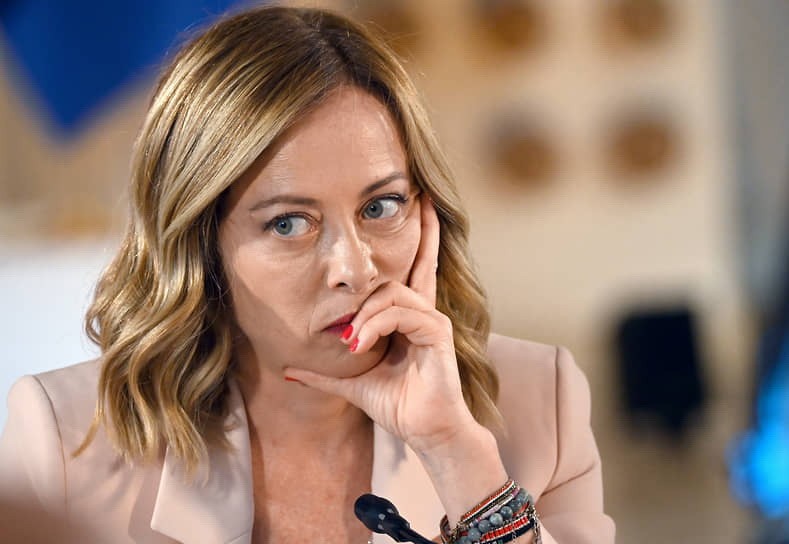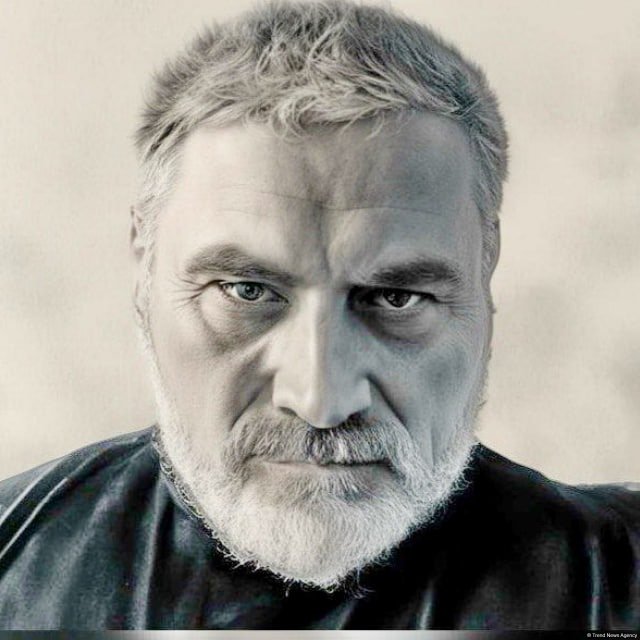Astana, May 30, 2025. That day, the Kazakh steppe didn’t breathe with its usual wind — it breathed with history. And not just history in the making, but the draft of a new geopolitical map, sketched in real time on the crossroads of empires and trade routes. A new diplomatic format was born — one that may not flip the Eurasian table, but is certainly nudging it a little closer to an Italian villa with a view of the globe.
The inaugural “Central Asia–Italy” summit came together like a rare celestial event: carefully orchestrated, politically radiant, and unexpectedly magnetic. Giorgia Meloni — a prime minister with the composure of a Roman statue and the warmth of a Tuscan afternoon — walked into a region typically reserved for superpowers or century-long strategies. She came not with pomp and protocols, but with the instincts of a predator who knows when fresh political meat is on the table.
And she wasn’t received as a tourist. She was welcomed like an envoy of something larger — perhaps, even, an alternative. There was tea infused with rose petals, heraldic carpets underfoot, and speeches calibrated like precision instruments. The pageantry wasn’t just polite — it carried a subtle current of hope: what if she’s the one to bring partnership from the West, not preaching?
With her firm stride and soft smile, Meloni shattered expectations. Her visit wasn’t just a stopover — it was a statement: in a world where the East is steadily picking up the first violin, Italy is here to join the orchestra. Not to play along, but to improvise.
Italy just made a move that might turn out to be strategic — and consequential. For decades, Central Asia has been a geopolitical ping-pong table for Moscow’s old empire, Beijing’s new investments, Brussels’ gentle reforms, and Washington’s occasional law enforcement. But now, on the horizon, there’s a new player — a little unpredictable, but charming and pragmatic. That player is Rome. And it’s led by Giorgia Meloni — a politician whose tone and message hit home in Central Asia as easily as they echo through the halls of the Quirinal Palace.
The summit’s biggest win? Central Asia didn’t see Italy as Brussels' envoy, a “European quota,” or a showroom for Western values. It saw a player in its own right — with its own agenda, its own voice, and yes, its own charisma.
“You are one of the most prominent political figures of our time,” President Tokayev told Meloni. In diplomacy, that's worth more than a billion-euro investment package. And he meant it. Meloni’s visit to Samarkand had already made waves. She didn’t come just bearing flowers — she came with a geopolitical message. And the region took notice. Some, with genuine admiration.
Meloni is a rare breed among today’s Western leaders: right-wing, yet anti-colonial; Atlanticist, but Euroskeptic; pragmatic, and at the same time, magnetic. For leaders in Central Asia weary of European sermons, that’s a breath of fresh air. She didn’t come to lecture — she came to deal. And people picked up on that instantly.
The summit, true to its ambition of launching a new diplomatic format, delivered real substance. Some key pillars:
1. Economy and SMEs:
Italy zeroed in on small and medium-sized enterprises, unlocking
financing channels via AICS and CDP. The logic is sharp: SMEs
aren’t just about growth — they’re social architecture. Back the
entrepreneurs, and you shape tomorrow’s political landscape.
2. Energy:
Enel and Snam didn’t just show up with contracts — they came armed
with a technopolitical blueprint. Gas, uranium, renewables, and
green hydrogen. This wasn’t just about energy — it was about
carving influence away from Russia, China, and even France,
especially now that Paris is losing ground in parts of Africa.
3. Transit and the Middle Corridor:
Italy is going all in on the Trans-Caspian route. Genoa and Trieste
aren’t just ports anymore — they’re being pitched as maritime
bridges between Eurasia and the West. Think Caspian Sea, Caucasus,
Turkey — and then Europe. Rome is proposing an alternative to
routes dominated by Moscow and Tehran.
4. Ecology:
The Aral Sea isn’t just an environmental disaster — it’s a symbol.
Italy offered not just tech, but academic know-how, tapping NGOs
and universities. It’s more than aid — it’s participation. And
that’s how humanitarian credibility is built.
5. Cultural Diplomacy:
A Year of Cultural Convergence, new university branches, and a
Center for Italo-Asian Initiatives under UNESCO. This isn’t just
soft power — it’s intellectual and cultural outreach without
bayonets or doctrine.
But the real intrigue surrounding Giorgia Meloni’s tour wasn’t just in the iron-willed poise wrapped in Italian flair. It boiled down to one question: Whose game is she playing?
Is she doing this for Rome — staking out a sovereign role in the Eurasian space? Is she quietly spearheading Brussels’ pivot eastward? Or — and this is where whispers grow louder — is she moving in tandem with President Trump, playing a not-so-official card on behalf of Washington?
Whatever the answer, one thing’s clear: when Meloni walked into Astana, she didn’t just enter a summit. She stepped into a vacuum — and filled it with presence, promise, and unmistakable Italian intent.
A Subtle Pivot: Italy’s Quiet Bid to Reroute the Heart of Eurasia
The answer isn’t obvious — and that’s precisely what makes it interesting. On one hand, Italy keeps its distance from the European Union rhetorically, wrapping itself in the flag of sovereignty and healthy skepticism. But in practice, it remains firmly embedded in EU structures. On the other hand, Prime Minister Giorgia Meloni has made no secret of her pragmatic rapport with the Trump administration, which views her with a kind of respectful affinity. And then there’s the third variable: Central Asia itself — a region where Rome arrives unburdened by colonial baggage or the condescending tone of Western "mission civilisatrice."
Central Asia, in 2025, might just be the world’s last open field for great-power competition — a geopolitical free market where five forces exert simultaneous pull:
– China, with its loans, trade routes, and Belt and Road
ambition
– Russia, still clutching levers in security and labor
migration
– Turkey, invoking Turkic kinship and military alliances
– The European Union, torn between green imperatives and resource
hunger
– The United States, focused on logistics and strategic
containment
In this crowded arena, Italy doesn’t need to outcompete — it can outmaneuver. It’s not offering an alternative to any one player. It’s offering a break from fatigue. No moralizing, no coercion — just a straight trade: tech and capital for resources, education for influence. A clean handshake in a space oversaturated with pressure and pretense.
But that pitch isn’t without its risks. If Italy overplays its hand, or slides too comfortably into Brussels’ shadow, the whole format could collapse into a “C5+EU” clone — and local elites, once intrigued, may turn to indifference or worse, disappointment.
Despite the warm welcomes and hefty agenda, the “Central Asia–Italy” format is walking a tightrope. The challenges are real:
– Resource rivalry: European and American hunger for rare earths and energy could spark backlash — the kind of talk about “resource colonialism” that Rome desperately wants to avoid.
– Institutional redundancy: If Italy acts too much on Brussels’ behalf, it risks drowning in EU bureaucracy, its own proposals fading into white noise.
– Multilateral overkill: Forums, working groups, clubs — they sound good, but without real deliverables, the format risks becoming another echo chamber, like so many before it.
– EU infighting: Italy and France are already stepping on each other’s toes in Kazakhstan, competing for deals without a unified European approach. That internal rivalry undermines any illusion of a coherent Eurasian strategy.
– Political transitions: Kazakhstan, Uzbekistan, and Kyrgyzstan are all entering pre- or post-constitutional phases. Rome will need to be agile — and avoid betting on the wrong horse.
Yet it’s precisely this lean structure — no empire, no ideology, no heavy-handedness — that gives “Central Asia–Italy” its charm. Unlike the “C5+1” with Washington, or the hesitant EU partnerships, this is a format without strategic schizophrenia. Italy doesn’t claim to be a superpower. It’s not a former colonizer. It’s not here to impose doctrine. That makes it easier to trust — and easier to talk to.
Where the U.S. often leans into security frameworks and data control, and Brussels can’t seem to choose between climate quotas and values evangelism, Rome keeps it simple: business, people, infrastructure. SME support, university fellowships, logistics links, clean energy — these are tangible offers that speak to local elites tired of sermons and slogans.
And unlike “C5+1” or “C5+EU,” this isn’t a top-down club. From the start, “Central Asia–Italy” was framed as a partnership of equals. The next summit is set for 2027 in Kyrgyzstan — a small but powerful signal. There’s no single capital at the helm. The format will rotate, pulling new voices into the mix. It spreads both legitimacy and responsibility, allowing each host country to step onto the global stage without playing second fiddle.
In a region where everyone wants to lead, Italy’s strength may lie in not trying to. It’s not charging into Central Asia with flags and fleets. It’s walking in quietly, with contracts, campuses, and curiosity. And sometimes, that’s exactly what makes a new power welcome.
Much will come down to what happens next. The summit may have dazzled with symbolism and structure — the launch of a High-Level Council, an economic forum in the pipeline, and multiple working tracks already in motion. But these are scaffolds, not substance. Without real deliverables, the format could run out of steam before it ever picks up speed.
Whether the summit becomes a milestone or a footnote depends on one person. Giorgia Meloni now stands in a uniquely strategic position: she’s a charismatic national leader with grassroots legitimacy at home — and a difficult, sometimes disruptive, partner within the European Union. Her personal engagement, cited explicitly by both Tokayev and Mirziyoyev, was the catalytic force behind Astana’s success.
If Meloni can manage the delicate balancing act — between Euro-Atlantic loyalty, personal rapport with Trump, and a clear-eyed, sovereign pragmatism — the “Central Asia–Italy” format could mark not a moment, but the start of a new geopolitical geometry.
In an era where global alliances are cracking into fragments and regions are asserting themselves as autonomous centers of gravity, Rome’s model — soft-touch, business-minded, and sharply targeted — could prove not only workable, but necessary. Especially if it’s led by a figure who can speak with Tokayev, Mirziyoyev, Trump, and Erdoğan not from a pulpit, but as a peer — with dignity, without lecturing.
The Astana summit revealed a new truth: Eurasia no longer belongs solely to those who once ruled it. A new generation of actors is stepping onto the stage — not always the most powerful, but often the most agile. Italy, acting in its own name and not under a Brussels mandate, is offering Central Asia something rare: not dominance, but co-authorship of the future.
If that offer holds — if Italy resists the urge to become “more European than Europe” — the format won’t just survive; it might become a template for others. But if Rome retreats into the safety of EU talking points, it risks ending up as just another well-intentioned diplomat with nothing in hand.
The bottom line? Sometimes, those who arrive last walk away with the prize. Especially when they come bearing style, confidence — and a bit of old-school Italian charm.







